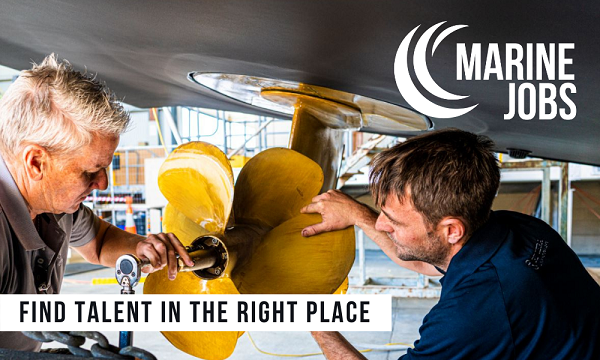The first economic impact study on Australia’s superyacht industry has revealed a high value niche sector, which contributed a total of $1.97 billion to gross domestic product (GDP) in the 2016 financial year.
But the AEC Group economic impact study also found the industry is held back by restrictive policy – if relaxed, the industry could contribute an additional estimated $1.12 billion to GDP by 2021, for a total contribution of $3.34 billion. The study was commissioned by AIMEX and supported by the Queensland government to gain a clear understanding of the superyacht industry’s current and potential economic contribution.
“This study shows the significant economic potential of Australia’s superyacht industry. If the government fixes our legislation, so foreign superyachts have freedom to charter here, like they do in New Zealand, our local superyacht industry would grow substantially – we could see an extra 8,100 local jobs making a total of 24,400 jobs by 2021,” said MaryAnne Edwards, Chief Executive of peak body for Australia’s marine export and superyacht industries AIMEX. “We are seeking standalone legislation to relax regulations in the superyacht sector.”
Currently, very few international superyachts come to Australia because the current legislation makes charting in our waters unviable – a superyacht must be fully imported and 10% GST on its value paid.
“After the devastation of Cyclone Debbie, a change is legislation is more important than ever to allow superyachts to cruise in Whitsunday region, to help local businesses and families get back on their feet.” said Ms Edwards.
The study revealed for the first time a fuller picture of the economic benefits superyachts provide to the Australian economy, including:
- Local jobs – the industry supported around 14,500 full time equivalent (FTE) jobs, paying $1.2 billion in wages and salaries in 2016.
- Luxury goods and services – foreign guests on superyachts spend an estimated $15,000 to $25,000 per day on land in Australia, in the days before and after their cruise. This includes an average $7,500 for luxury goods and services, such as jewellery, clothes, food and drinks.
- Local maintenance and construction of superyachts – contributed $400 million in gross product in 2016.
- Tourism – foreign tourist, guest and crew expenditure provides near $190 million annually for the local tourism market.
- Transport and warehousing of superyachts – $77 million in gross product in 2016.
- Accommodation and food for superyachts – $50 million in gross product in 2016.
- Professional services supporting superyachts – $44 million in gross product in 2016.
- Local retail trade benefiting from superyachts – $42 million in gross product in 2016.
Forecasts gross state product from superyacht industry in 2021, with and without policy change.
- Cairns (including Whitsundays) – $374 million; $577.7 million.
- Southeast Queensland – $724.3 million; $1.13 billion.
- Sydney – $546.2 million; $877.8 million.
- Melbourne – $101.7 million; $173.3 million.
- Perth – $228.9 million; $271.1 million.
- Tasmania & rest of Australia – $243.4 million; $362.5 million
Other economic benefits of policy change
- GST revenues from superyachts would grow fivefold to $118.3 million
- Australian manufacturing would gain an extra $235 million in gross product
- Other key industries benefiting from superyacht activity, including retail trade, transport and warehousing, professional services, accommodation and food services, would gain $70 million in gross product.




